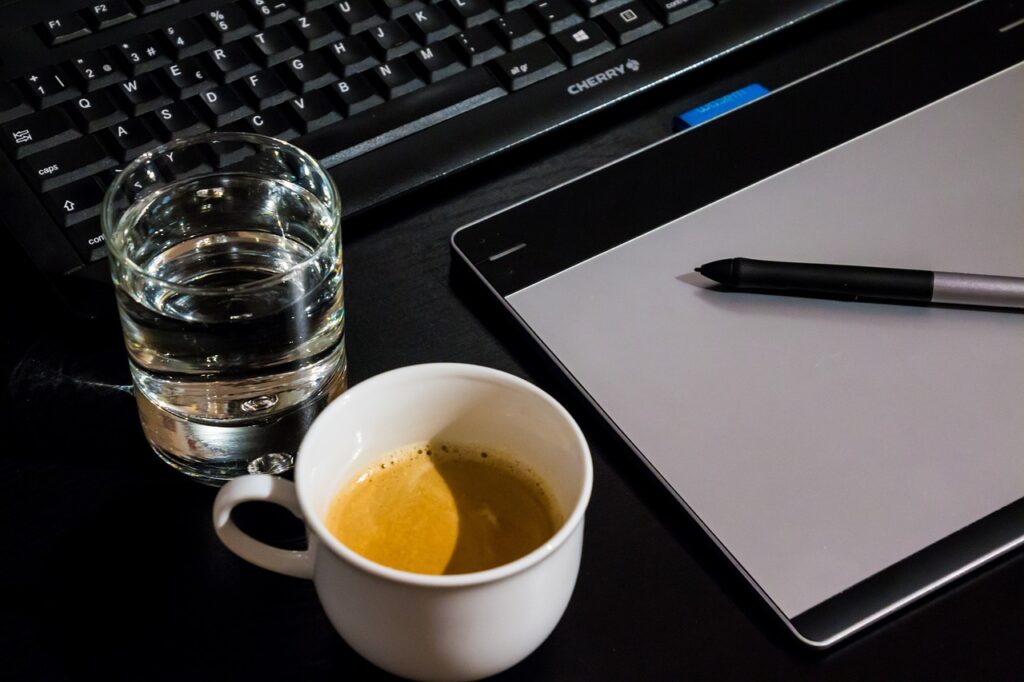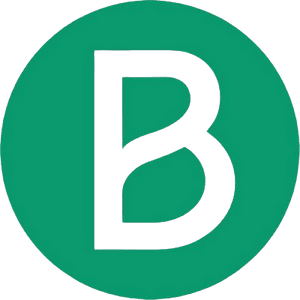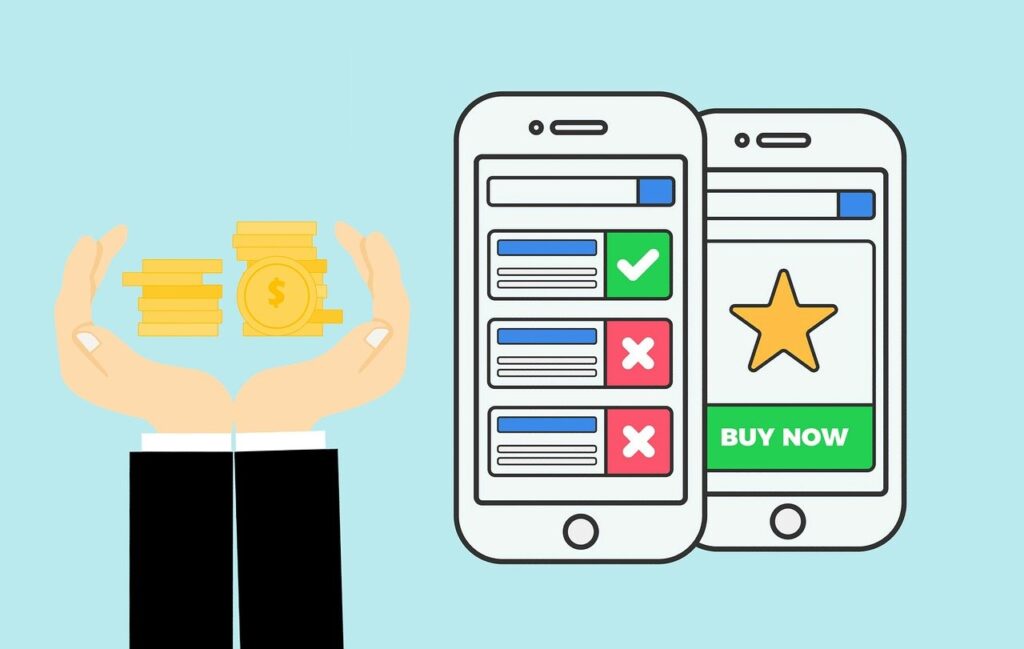In the dynamic world of graphical designStagnation is not an option. Having sharp skills and an in-depth knowledge of the latest trends gives designers a significant competitive edge. This article guides you on how to improve your skills in graphical design to stay ahead of the game.
Tools to improve your design skills
Adopting new tools is essential to staying at the cutting edge of graphic design innovation. These tools can speed up the creative process, facilitate collaboration and open up new avenues of creativity. Here are some innovative tools to consider:
Adobe Creative Cloud
This suite offers a complete range of graphic design, photo and video editing applications, including Photoshop, Illustrator and After Effects. Its ability to integrate work across multiple platforms and devices makes it an essential choice for professionals.
Sketch
Particularly popular for interface design and prototyping, Sketch offers a simple interface and powerful features to facilitate the design of applications and websites.
Figma
Figma stands out for its real-time collaboration capabilities, enabling entire teams to work simultaneously on the same project. This cloud-based tool is ideal for interface design, prototyping and the creation of design systems.
Procreate
For artists and graphic designers who often work on a tablet, Procreate offers a natural drawing experience with an impressive brush library, pen pressure support and advanced photo editing features.
Incorporating these tools into your workflow can not only improve efficiency but also broaden your range of design skills, arming you to meet tomorrow's creative challenges with confidence.
Creative Collaboration Techniques
Collaboration is a cornerstone of modern graphic design. Working with others, whether within your team or with clients, can unlock unique perspectives and lead to innovative results. Here are a few techniques to improve your creative collaboration:
Use of Project Management Platforms
Platforms such as Trello, Asana, or Basecamp help organize projects, track progress and facilitate communication between team members. They provide a clear overview of each project and help synchronize everyone's efforts.
Brainstorming workshops
Organizing brainstorming sessions with your team or customers can generate a wealth of ideas in a short space of time. These meetings should be structured in such a way as to allow each participant to contribute freely, thus fostering a diversity of perspectives and enriching the project.
Constructive Feedback and Continuous Review
Encouraging an environment where feedback is seen as a learning opportunity can greatly improve the quality of design work. Regular review sessions, where work is constructively analyzed and critiqued, can help refine concepts and produce high-quality designs.
Visual Collaboration Tools
Tools such as Miro and InVision facilitate visual collaboration, enabling teams to work together on models and prototypes in real time. This reduces the barriers of distance and enables effective co-creation.
By implementing these collaborative techniques, you can enrich your graphic design process, produce more coherent and innovative results, and strengthen the bonds within your creative team and with your customers.
Experimenting with Design Trends
Immersing yourself in current design trends is crucial to staying competitive in this fast-changing environment. However, adopting these trends must be done thoughtfully, ensuring that they complement your unique style while meeting your customers' needs. Here are a few trends to explore:
Minimalism
Minimalism, with its mantra "less is more", continues to dominate the graphic design landscape. This trend emphasizes uncluttered composition, the use of limited colors, and careful typography to create designs that communicate directly and effectively.
Creative Typography
Typography is no longer just a means of conveying a message; it has become an artistic expression in its own right. Experiment with unusual sizes, spacing and structures to give your designs a strong visual impact and a distinct personality.
Color gradients
Color gradients are making a comeback. These fluid color transitions can add depth, dynamism and a modern feel to your designs. Used judiciously, gradients can also help direct the viewer's eye and evoke specific emotions.
3D Design and Augmented Reality
As technologies advance, 3D design and augmented reality offer new and exciting playgrounds for graphic designers. These tools can create immersive experiences that captivate attention and offer viewers a new way of interacting with design.
Experimenting with these and other trends can enrich your portfolio, set you apart and enable you to offer innovative design solutions that meet current market demands. Keep in mind that success lies in balance - integrating trends so that they reinforce your creative vision, without overwhelming it.
Inspiration beyond design
Inspiration is a fundamental part of the creative process. It can come unexpectedly and from a variety of sources, far beyond the traditional field of graphic design. Broadening your horizons and seeking inspiration in different fields can enrich your projects and inject new energy into your work. Here's how to do it:
Exploring arts and culture
Immerse yourself in the arts, whether visual, musical or literary. Visiting museums, attending concerts, reading poetry or exploring architecture can open your mind to new forms of expression and stimulate your creativity.
Nature as Muse
Nature remains an inexhaustible source of inspiration. The shapes, colors and textures found in the natural world can inspire original and innovative designs. Taking the time to immerse yourself in nature can also be an excellent way to recharge your batteries and come up with new ideas.
Travel and New Experiences
Travel offers a unique opportunity to discover new cultures, artistic techniques and perspectives. These experiences enrich your understanding of the world and can be translated into designs that communicate in a more universal and moving way.
Interaction with Other Creatives
Attending workshops, conferences or meeting other creative professionals can stimulate innovation and experimentation. Sharing knowledge and experience is vital to staying up to date and inspired by the work of others.
Cultivating an incessant curiosity and remaining open to diverse sources of inspiration are essential for any graphic designer seeking to renew their practice and produce work that resonates on a deeper level. By drawing inspiration from beyond the traditional boundaries of design, we can create works that not only captivate visually, but also tell stories, touch the emotions, and incite reflection.
Continuous Learning and Skills Development
In a constantly evolving field like graphic design, continuous learning and skills development are crucial to maintaining your relevance and competitive edge. Here are a few ways to continue your professional growth:
Formal Training and Online Courses
Investing in formal training, whether through online courses, workshops, or webinars, can provide in-depth knowledge of specific topics, state-of-the-art software, or innovative design methodologies. Platforms such as Coursera, Udemy, or LinkedIn Learning offer a wide range of resources suitable for all skill levels.
Personal Projects and Experimentation
Getting involved in personal projects or design competitions is a great way to practice new skills, get out of your comfort zone, and stimulate your creativity. Experimentation is essential to discovering and refining your unique path in the vast world of design.
Professional Networks and Design Communities
Actively participating in professional networks and design communities can not only offer networking opportunities, but also facilitate the exchange of knowledge, techniques and constructive critical feedback. Online forums, Facebook groups, or local design events are all great places to connect and learn from others.
Technology Watch and Design Trends
Keeping abreast of the latest technologies, tools and trends in graphic design is essential to ensure that you don't get caught out by market developments. Following specialized blogs, design magazines, or recognized influencers in the field can provide valuable insights and inspire your future projects.
Feedback and self-evaluation
Taking the time to solicit feedback on your work and regularly self-evaluate your projects enables you to identify areas for improvement and make targeted progress. Being receptive to feedback, whether positive or critical, is essential for personal and professional development.
Continuous learning and skills development are integral components of a graphic designer's career. Not only do they enable you to remain competitive, they also enrich your creative process, broaden your field of expertise, and produce innovative, impactful designs.
Continuous improvement of graphical design is a journey of discovery, experimentation and evolution. Follow the tips and innovative ideas presented here to enrich your creative arsenal. By taking a proactive, thoughtful approach, you won't just follow trends - you'll define them.
We hope these prospects will motivate you to pursue your quest for excellence with enthusiasm and determination. graphical design. For more information and access to our resources, visit our platform and join a community of visionary designers.









